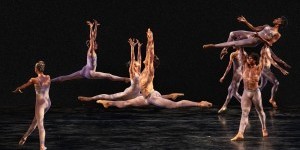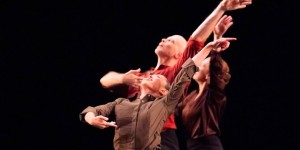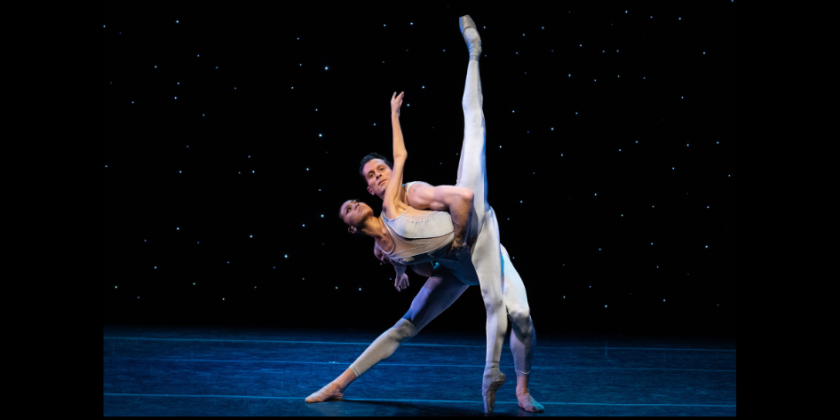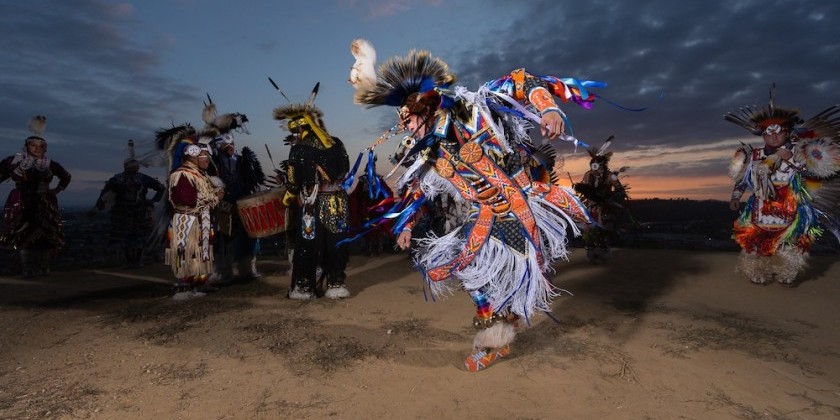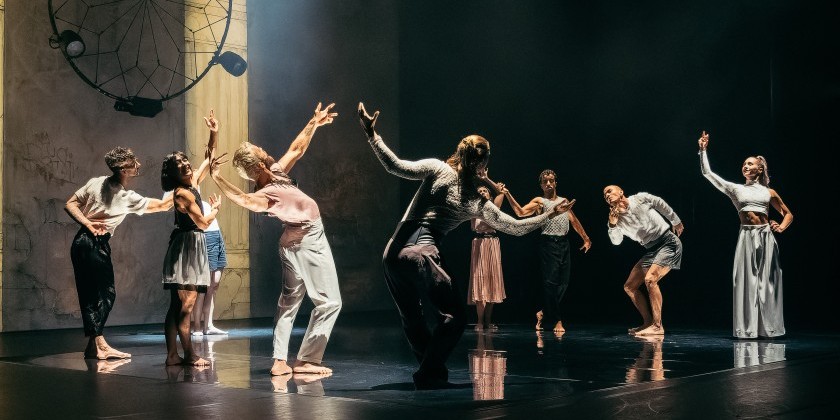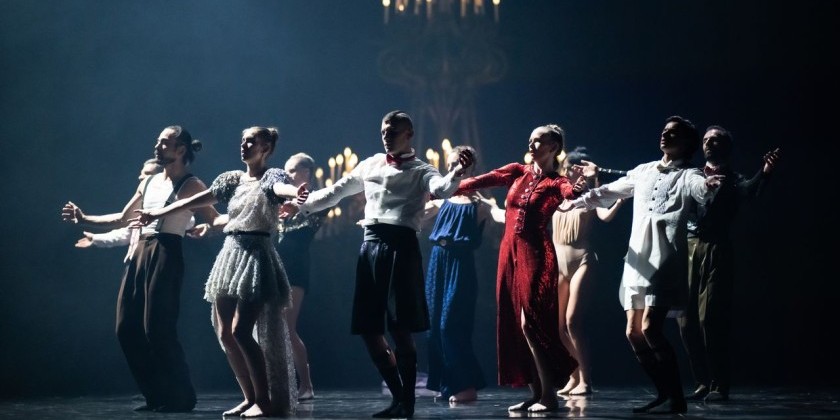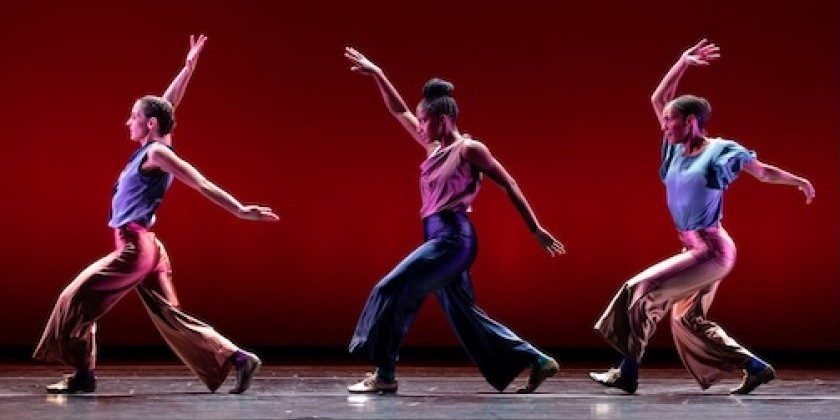IMPRESSIONS: BalletX from Philadelphia Celebrates 20th Anniversary Season at The Joyce Theater
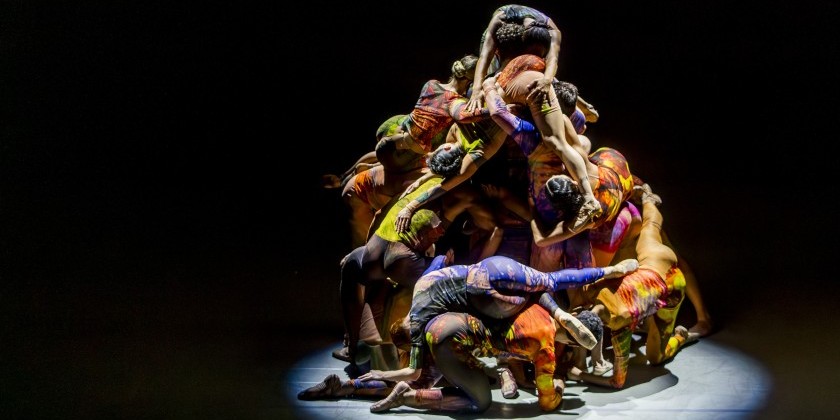
Artistic Direction: Christine Cox
Choreography: Noelle Kayser, Darrell Grand Moultrie, Nicola Wills, Gregory Dawson
Music: Jeff Kolar, Bebo & Cigala, Adam Vincent Clarke, Luke Carlos O’Reilly
Lighting Design: Drew Billiau, Mark Stanley, Alyssandra Docherty
Costume Design: Amanda Gladu, Mark Eric, Christine Darch, Martha Chamberlain
Dancers: Eli Alford, Itzkan Barbosa, Savannah Green, Lanie Jackson, Mathis Joubert,
Jared Kelly, Eileen Kim, Skyler Lubin, Jonathan Montepara, Jerard Palazo, Minori
Sakita, Ben Schwarz, João Pedro Silva, Ashley Simpson, Peter Weil
The Joyce Theater
September 24 - 28, 2025
Launching its 20th anniversary season, the technically-impressive, 16-member, Philadelphia-based contemporary ballet troupe BalletX made a September appearance at The Joyce Theater in a quadruple bill comprising New York premieres of two large ensemble works created this year and brief excerpts from two older pieces.
Though performed brilliantly by the company’s top-drawer dancers, alas, the two 2025 works book-ending the program proved less compelling choreographically than the small dances nestled between them. A sultry solo from Vivir (2018), choreographed by Darrell Grand Moultrie, and a dramatic duet from Two People in Love Never Shake Hands (2024), by choreographer Nicola Wills, outshined the big group pieces, Scales on the Wings of a Butterfly by Noelle Kayser and Gregory Dawson’s Sojourner.

Part of a larger work celebrating Latin music, Moultrie’s affecting solo is set to a recording of the bossa nova standard Eu Sei Que Vou Te Amar, rendered by jazz pianist Bebo Vádes and flamenco singer Diego el Cigala. Built of slow, emotion-laden gestures, expressive torso stretches, falls, floorwork, and glorious leg extensions, all mirroring the sentiments of the song, it’s the kind of dance that, in the competition world, would be classified as “lyrical,” often considered a cheesy form.
Yet, Moultrie’s choreography represents that genre at its best, here assisted in no small measure by stunning dancer João Pedro Silva’s passionate performance of the fervent piece.

Performed by two terrific dancers — Lanie Jackson, who proved also to be a captivating actress, and Jared Kelly, who partnered her superbly — Two People in Love Never Shake Hands is a sagely choreographed portrayal of a couple’s romantic journey.
Like a movie filmed in one continuous shot, the choreography flows magnificently from tender touches and loving lifts to discordant gestures, erotic actions, separations and reconnections. We discern no distinct movement phrases, no beginnings, no ends, and no edges, as we watch the twosome move non-stop through a tremendous variety of deeply-felt, contemporary dance vocabulary. Smoothly pivoting tensions in the work’s score by contemporary composer Adam Vincent Clarke underline the contours of Wills’s charged choreography, and we come to understand a caring relationship as seamless shifting through a vast spectrum of emotional states.

But it was the scrumptious jazz music that accompanied the closing work, Dawson’s Sojourner, that turned out to be the highlight of the evening. Composed by pianist Luke Carlos O’Reilly, it was performed live onstage by O’Reilly, along with Lee Hogans (trumpet), Christopher McBride (sax), Adi Meyerson (acoustic bass), Michael Piolet (drums), and Kofi Hunter (percussion). Comprising multiple discrete sections, the score puts forth a fresh, urban feel and ranges from sassy to sad, swinging, and exuberantly sophisticated.
Yet no matter its mood, the music exudes a rich warmth that the fast, energetic, forgettable choreography, built largely of cold, linear vocabulary, fails to capture. (You won’t be surprised to learn from his program bio that Dawson danced for 18 years with Alonzo King’s LINES Ballet, as his choreographic lexicon resembles King’s extreme line-driven, abstract approach.)

For the most part, Dawson’s piece is “over-choreographed” in that the stage is often populated with more bodies than the music or movement-content demands. For example, the music in a percussion-only portion of the score conjures a soft intimacy that feels “invaded” by the busy, large-group dancing Dawson sets to it. The sounds are gently ensnaring, while the choreography feels big and crowded. Later, we happily watch a female dancer move gorgeously to a drum solo, until she is joined by three other women replicating her movements and a sense of “overkill” pervades the stage. A danced-on-pointe pas de deux is accompanied by spare piano sounds that bear no discernible relationship to the couple’s classically-structured, showy choreography.
The work’s music-movement relationship is established most successfully in two male solos — one slow and sensual and set in front of a blur of movement created by an ensemble moving subtly in the background, the other rhythmic, and danced with exciting musicality by Kelly.
From time to time, Dawson inserts references to pop-dance moves into his choreographic phrases lending a lightweight feel to the proceedings that is, unfortunately, furthered by Martha Chamberlain’s costumes. Made of light-colored, see-through fabrics, the garments hang wispily from the dancer’s bodies, in fashions more appropriate to ethereal, fairy-like creatures than inhabitants of the very human world of natural feelings conjured by the work’s appealing jazz music.

The program opener, Kayser’s Scales on the Wings of a Butterfly, launches with a series of striking images separated by black-outs. First, we see a stack of bodies draped loosely atop one another, piled ceiling-high. Then we see a stage full of females each held aloft by a partner as they lie back with stiff limbs frozen into 90-degree angles, in cartoon-like depiction of dead insects.
Later in the piece women stand on pointe, legs together, and cover their eyes with their hands. Viewed together, the odd images remind us that Kayser’s work, according to a program note, is inspired by microscopic photography, which reveals biological shapes and patterns the human eye cannot perceive.

Despite its sporadic inclusion of genuinely intriguing body shapes and groupings, choreographically, Kayser’s work is unengaging. It contains stutters of movement, slides, sharp brittle gestures that morph into flapping-wing actions, walks with swaying hips and sunken-in rib cages. Continual contrasts of sharp and smooth energies keep things interesting to a point, but the vocabulary feels so contrived that the piece registers as nothing more than robotic, shape-making.
About half-way through I felt I had seen enough. Additionally, Kayser’s choreography is not well-served by Jeff Kolar’s irritating electronic score. A pulsating bass often pervades, popping sounds are separated by lots of silence, whirring noises occur, and while it effectively references the scientific nature of the choreographic concept, artistically the score feels clichéd.
However, even in the service of so-so choreography, the dancers save the day and keep one eagerly watching throughout. To this troupe of thrilling performers I say, “bravo!”





